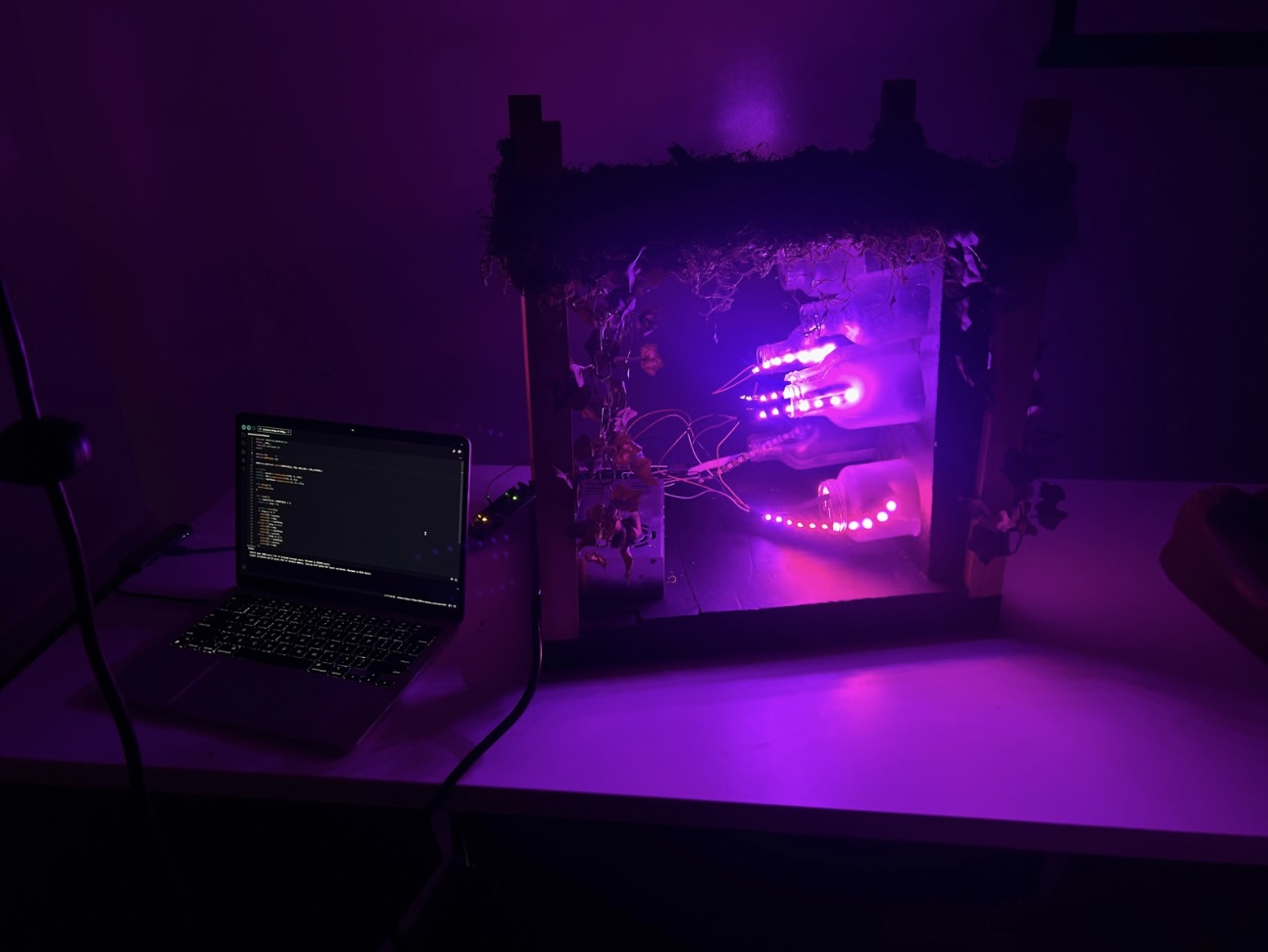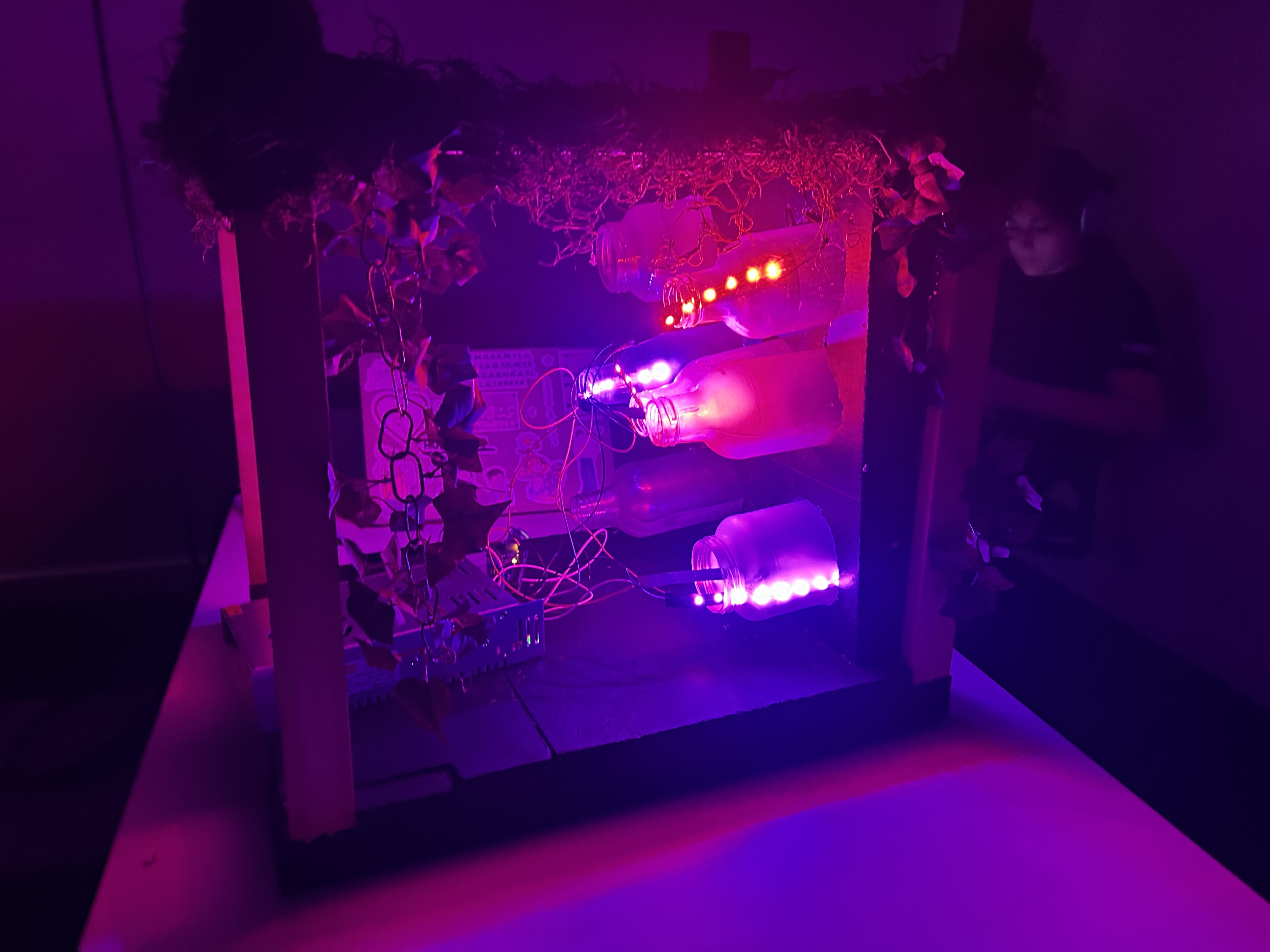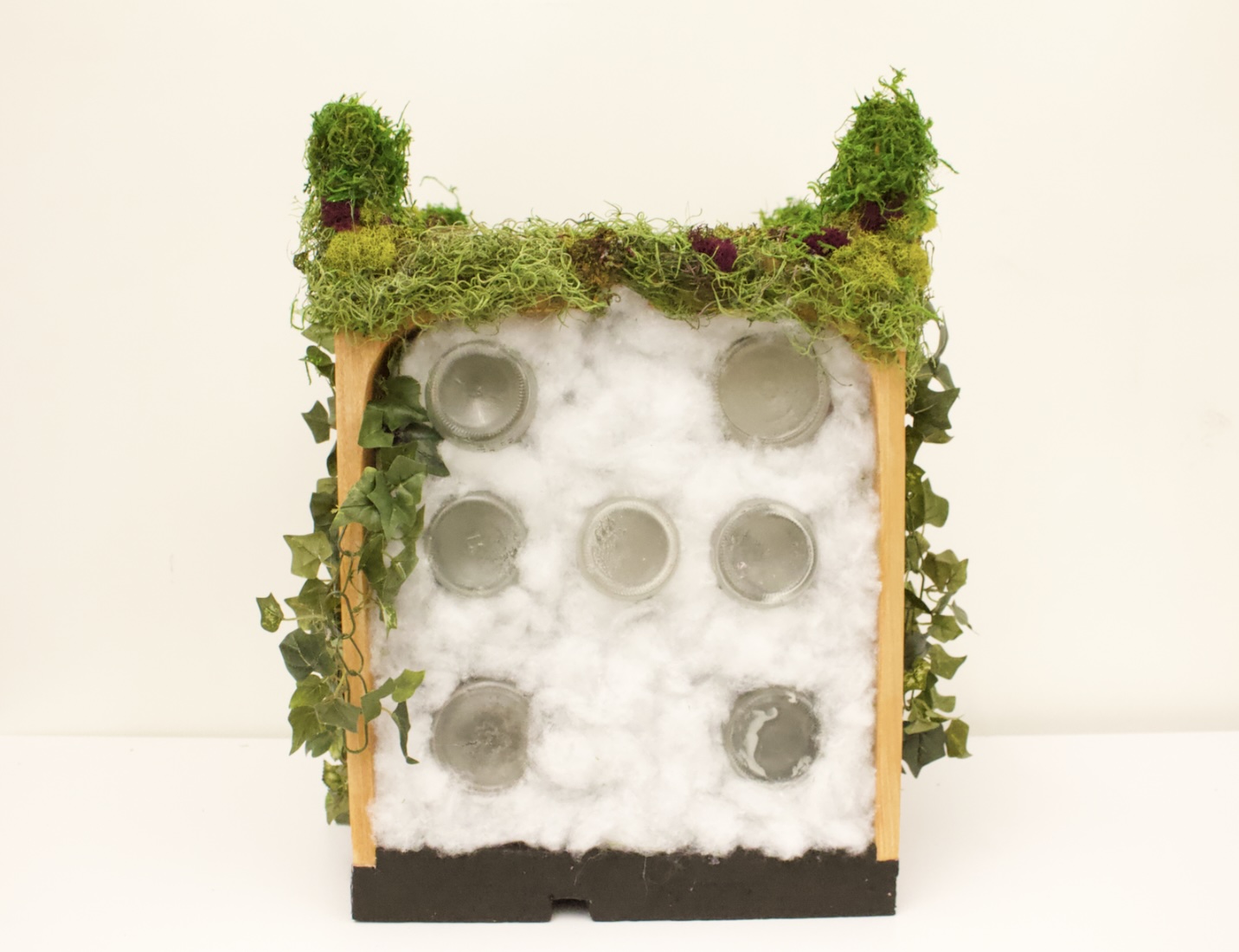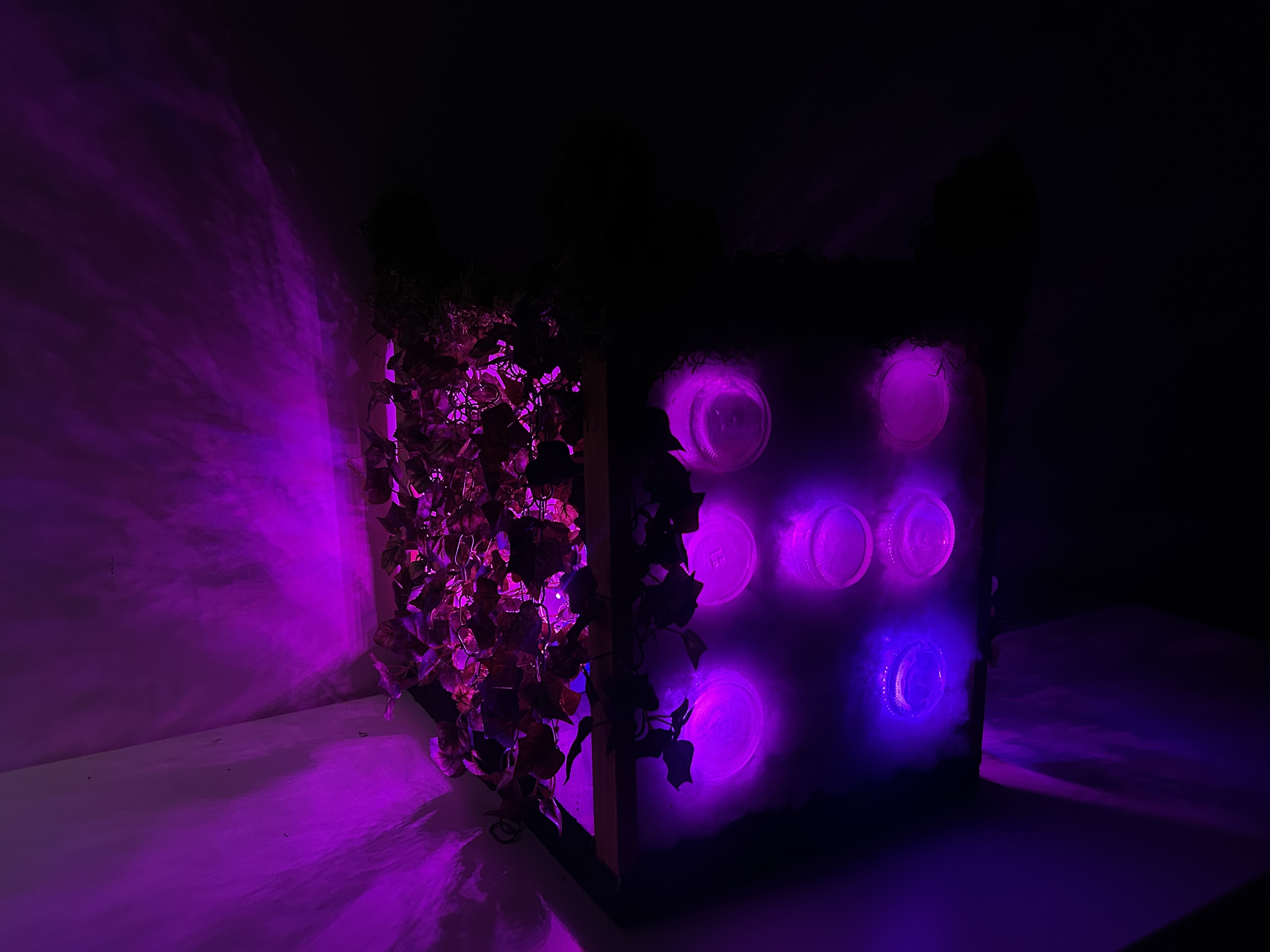Kindled Flames

Project Overview
Kindled Flames is a digital art installation that explores the nature of light through an immersive and interactive animation. Built using Arduino and LED technology, the project combines physical computing with hand-crafted materials to create a captivating visual experience. The installation reflects themes of transformation and energy, brought to life through dynamic light behavior.
The Challenge
The main challenge was constructing a responsive light installation using only found and recycled materials. Every element, wood, glass bottles, wiring, had to be sourced sustainably, and carefully assembled to support the technical components. We also had to design and solder multiple LED strips and program complex lighting animations that could bring the piece to life in a compelling and coherent way.
Process & Development
The project began with material exploration, collecting wood and glass bottles that would form the physical structure of the piece. We designed the layout to frame and reflect the lighting in interesting ways, using layering, texture, and diffusion. From there, we moved into the electronics phase: soldering long runs of addressable LED strips and integrating them with an Arduino microcontroller. The code was developed to simulate flame-like motion, experimenting with timing, brightness curves, and color transitions. Each component, hardware and software, was iteratively tested and refined to achieve both technical reliability and aesthetic harmony.
Project Gallery






Animation Demo
Outcome & Reflection
Kindled Flames came together as a deeply collaborative and hands-on project. Building with entirely repurposed materials added a meaningful constraint that encouraged creativity and resourcefulness. Technically, it pushed our skills in soldering, circuitry, and Arduino programming, especially in developing real, time animations that respond smoothly and consistently. The final result was a glowing, atmospheric sculpture that invited viewers to pause and reflect. Through this project, we learned how physical form and digital light can work together to evoke emotion. It solidified our interest in interactive art and illuminated new possibilities for working at the intersection of technology, sustainability, and design.
Technologies Used
- Arduino
- C++